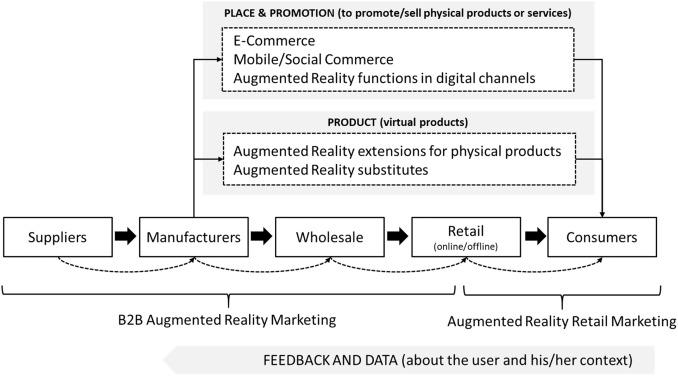Measuring the Impact of Bite-Sized Learning: Evidence, Benefits, and Best Practices
In today’s fast-paced world, traditional lengthy training modules have largely given way to bite-sized learning—short, focused learning experiences designed for maximum engagement and retention. But how effective is this learning approach, and how can organizations accurately measure its impact? In this comprehensive guide, we delve into the evidence, uncover the myriad benefits of bite-sized learning, and share best practices to ensure measurable results.Whether you’re an L&D professional, an educator, or a business leader, this article offers practical insights to optimize learning outcomes and achieve strategic goals.
what Is Bite-Sized Learning?
Bite-sized learning, also known as microlearning, refers to educational content delivered in small, easily digestible segments. Typically, each module or lesson lasts between 2–10 minutes and targets a single learning objective. This approach is ideally suited for modern attention spans and mobile-first learning environments.
- Format: Videos, infographics, quizzes, podcasts, and interactive PDFs
- Accessibility: On-demand learning via mobile or desktop devices
- Customization: Personalizable for individual learner needs
Why measure the Impact of Bite-Sized Learning?
To justify investments in digital training and confirm that bite-sized learning moves performance and retention metrics, it’s crucial to establish evidence-based assessment strategies. Accurate measurement not only confirms ROI but also guides content optimization, learner engagement, and aligns learning with organizational objectives.
Evidence of Bite-Sized Learning Effectiveness
Research supports bite-sized learning as a highly effective means of knowledge transfer. Some key findings include:
- Increased retention: Studies such as The Journal of Applied Psychology show that microlearning can boost retention rates by up to 20% compared to traditional training methods.
- Faster completion times: Learners complete micro-lessons 50% faster on average.
- Higher engagement: Short modules result in higher completion rates, with learners more likely to engage regularly.
Case Studies: Organizations Leveraging Microlearning
- IBM: By switching to microlearning for compliance training, IBM cut training costs by 30% and improved learner engagement scores.
- Google: Google’s employees use bite-sized modules for product updates, resulting in quicker knowledge dissemination and improved adaptability.
- Salesforce: Salesforce saw a 27% improvement in sales staff’s product knowledge post-implementation of microlearning content.
Measuring the Impact of Bite-Sized Learning: Metrics and Methods
Accurate measurement practices are essential for understanding how microlearning affects organizational outcomes. Consider the following key performance indicators (KPIs) and techniques:
Essential KPIs for Bite-Sized Learning
- Completion rates: Track the percentage of employees or learners finishing modules.
- Engagement: Analyse interactive elements (like quiz participation, comments, shares).
- Time-to-competency: Measure how quickly learners demonstrate mastery after microlearning exposure.
- Retention scores: Assess post-training retention via follow-up quizzes or interviews.
- Submission on the job: Track real-world performance improvements linked to specific modules.
Data Collection Methods
- Learning Management System (LMS) Analytics: Use built-in tracking to measure completion rates and time spent per module.
- Feedback Surveys: Gather direct learner perspectives on satisfaction and relevance.
- Knowledge Assessments: Conduct short quizzes pre- and post-training to measure learning gains.
- Performance Reviews: Compare on-the-job performance before and after microlearning.
Benefits of Bite-Sized Learning
Microlearning delivers clear advantages for learners and organizations alike. Here are some valuable benefits:
- Adaptability: Learn anytime, anywhere, suiting busy schedules and remote teams.
- Personalization: Content can be tailored to individual roles, learning styles, and goals.
- Immediate Relevance: Learners can instantly apply new concepts in real-world scenarios.
- Cost-effectiveness: Reduces production and delivery costs with shorter, easily updated modules.
- Scalable Deployment: Easily rolled out across large,dispersed teams.
Best Practices to Maximize Bite-Sized Learning Impact
1. Define Clear Learning Objectives
- Each microlearning module should focus on a single, measurable outcome.
- Use action-oriented language to set clear expectations.
2. Optimize Content Structure
- Break complex topics into logical segments.
- Incorporate rich media (video, infographics, interactive quizzes) to enhance engagement.
3. Ensure Mobile Accessibility
- Design content for both desktop and mobile devices.
- Test for compatibility across major platforms.
4. Embed Real-Time Feedback
- Use quizzes or instant feedback to reinforce learning.
- Collect learner input for continual improvement.
5. Link Learning to Performance
- Align microlearning objectives with organizational KPIs.
- Measure and report business impact regularly.
6. Encourage Social Learning
- Facilitate sharing and discussion to drive deeper understanding.
- Gamify modules for healthy competition and peer recognition.
First-Hand Experiences with Bite-Sized Learning
Many L&D professionals and learners praise the practical impact of bite-sized learning modules:
“switching to bite-sized learning has transformed our training outcomes. Our team retains information longer, feels more motivated, and actually looks forward to learning sessions.” – HR Manager, FinTech Startup
“When I need to upskill quickly, the short, focused lessons let me learn on the go. The quizzes and instant feedback make a real difference!” – Sales Associate, Retail Chain
practical Tips for Implementing & Evaluating Bite-Sized Learning
- Pilot test new microlearning modules with a small group before organization-wide rollout.
- Integrate microlearning into onboarding,compliance,and skills progress programs for seamless adoption.
- Set up automated data collection via your LMS for ongoing measurement and weekly reporting.
- Regularly update content to maintain relevance and engagement.
- Encourage managers to support, recognize, and reward learners for module completion and practical application.
Conclusion: Bite-Sized Learning—Small Segments, Big Impact
Bite-sized learning is no longer a buzzword—it is a proven strategy to boost retention, engagement, and practical application across diverse organizations. By accurately measuring its impact using evidence-based metrics and by following best practices,you can maximize its benefits for your learners and your business.
Ready to transform your training programs? Start with bite-sized learning—where measurable outcomes lead to lasting success.
For more actionable learning and development strategies, subscribe to our newsletter and explore our expert guides on elevating workforce performance through modern educational techniques.

